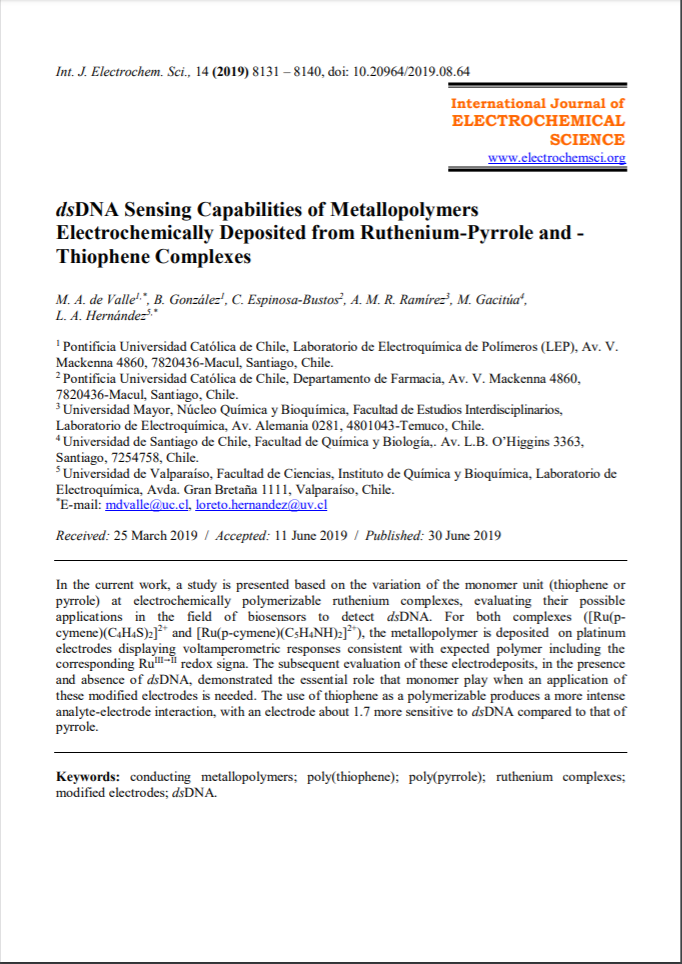dsDNA Sensing Capabilities of Metallopolymers Electrochemically Deposited from Ruthenium-Pyrrole and - Thiophene Complexes

Fecha
2019Autor
Ramírez, A. M. R. [Univ Mayor, Nucleo Quim & Bioquim, Fac Estudios Interdisciplinarios, Lab Electroquim, Temuco, Chile]
de Valle, M. A.
González, B.
Espinosa-Bustos, C.
Gacitua, M.
Hernández, L. A.
Ubicación geográfica
Notas
HERRAMIENTAS
Acceda a títulos restringidos
¿Cómo descargar?Resumen
In the current work, a study is presented based on the variation of the monomer unit (thiophene or pyrrole) at electrochemically polymerizable ruthenium complexes, evaluating their possible applications in the field of biosensors to detect dsDNA. For both complexes ([Ru(p-cymene)(C4H4S)(2)](2+) and [Ru(p-cymene)(C5H4NH)(2)](2+)), the metallopolymer is deposited on platinum electrodes displaying voltamperometric responses consistent with expected polymer including the corresponding Ru-III -> II redox signa. The subsequent evaluation of these electrodeposits, in the presence and absence of dsDNA, demonstrated the essential role that monomer play when an application of these modified electrodes is needed. The use of thiophene as a polymerizable produces a more intense analyte-electrode interaction, with an electrode about 1.7 more sensitive to dsDNA compared to that of pyrrole.
Coleccion/es a la/s que pertenece:
Si usted es autor(a) de este documento y NO desea que su publicación tenga acceso público en este repositorio, por favor complete el formulario aquí.